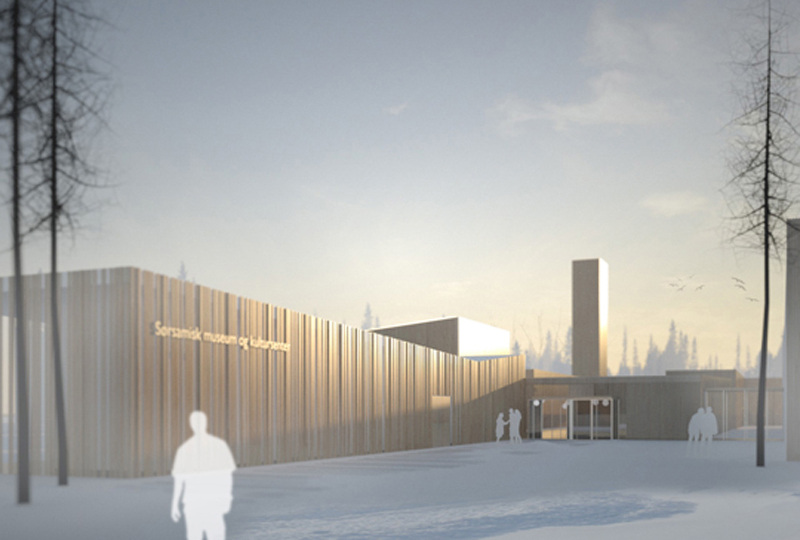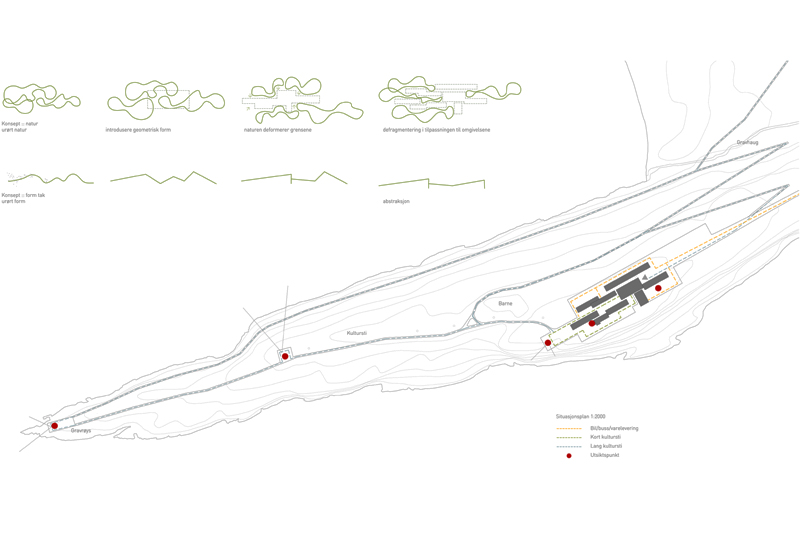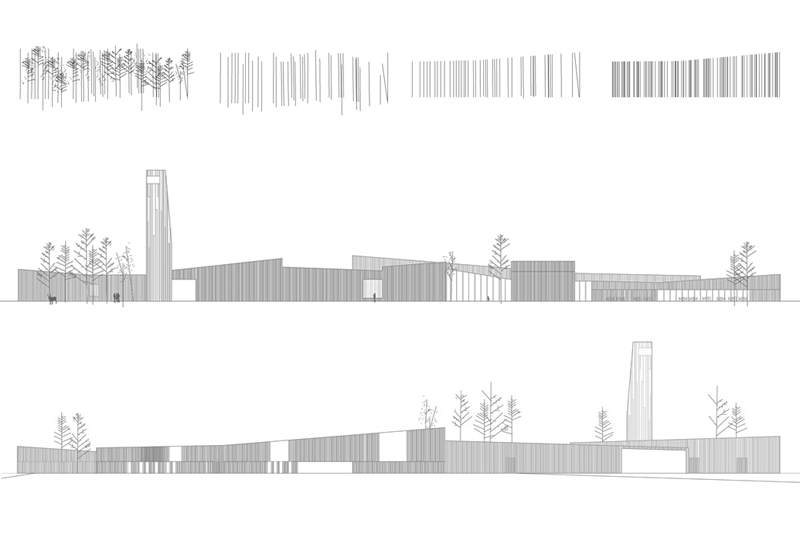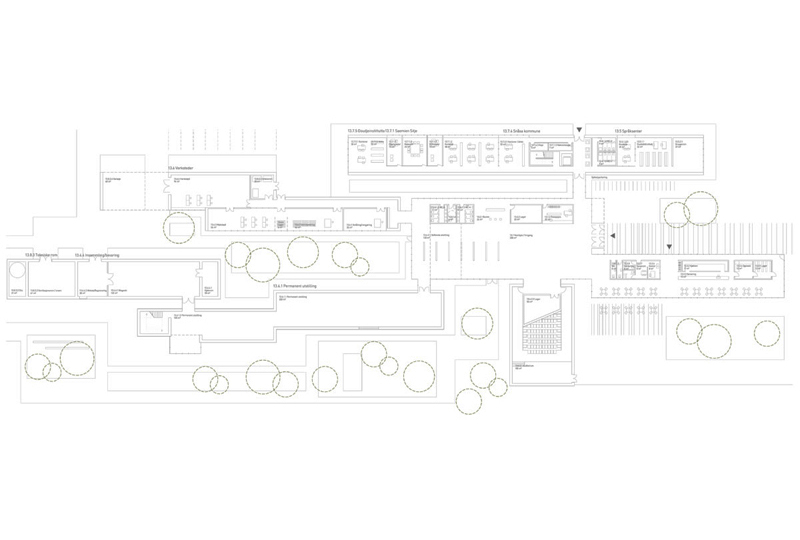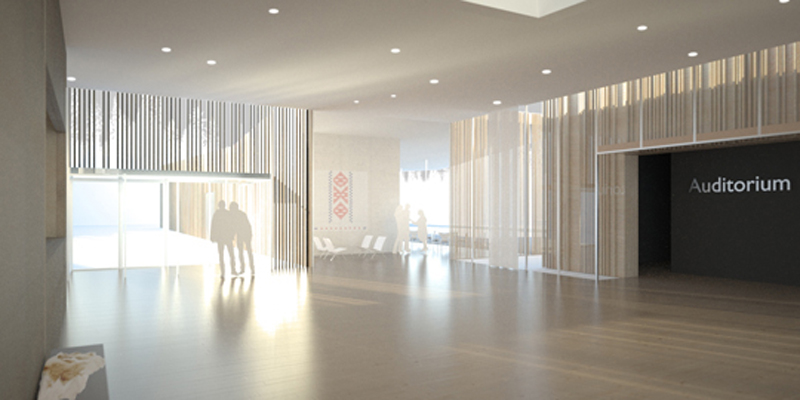To design a building for the Sami culture, and in an environment as stunning as the one proposed, it is necessary to adapt and to benefit from the natural surroundings in a sustainable manner.
Our proposal is based on this idea, providing a comprehensive program which is broken into small and independent volumes. This way we want to avoid creating a building with a too dominant presence over the landscape. This proposed solution also provides other advantages. First of all, it allows a larger surface of the program area being related in a closer way to the nature. Also, the constructive simplicity of small volumes will be more economical and evokes the systems traditionally used by the Sami people. Moreover, developing the program in separate volumes that share a common core, allows keeping different areas closed, while the rest of the building can continue operating, which means greater energy efficiency. At the same time, none of the components forming the building has a dominant presence over the others, respecting the Sami belief in a non-hierarchical social system.
We propose the use of wood as the main building material, which is obviously a solution linked to the Sami tradition, but at the same time is a very contemporary solution, because we are using the mechanisms, the improvements and the economy of means that make wood construction the most productive option for this specific area.
The way the building works is very simple, despite the complexity of the program, since everything is channeled through the central space of the lobby. This space is a large area for meeting and relationship, where temporary exhibitions can take place and where a stage for big performances can be set. This centrality of the lobby, allows the visitors to have a quick understanding of the building, an easier control of all the rooms by a single worker from the reception, and a great flexibility of use.
Besides the lobby, the building has other independent access, from paths which do not interfere with the main entrance and the outdoor program. The museum tour begins in the lobby, and develops some of its functions in areas and platforms near the building, which favors the effect of dissolving it in its natural environment. As the tour moves away from the building, the program is decreasing, offering the possibility of stopping at strategic points, where the best views of the landscape take place.
